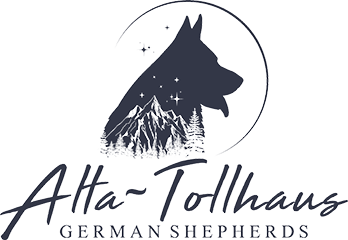So, I was thinking about the release cue, “break” yesterday. I never realized how much I really like it. I really noticed it Wednesday night when the couple with the yellow lab, Zoey? The doctor guy with the good tricks, while they were working on stuff before we
got started, and during the sit off. I should have said something, but I was stupid and didn’t have a fluent thought process all day…
With most people and pups that we’ve seen, you (the proverbial you) give the cue, they do the behavior, they get the treat, then they’re off and running right after they eat the treat. For example say you are working sits in class. you say “sit”, the dog sits, you mark “yes”, then give a treat, and the dog stands up disconnects from the handler and gets lost in the commotion of the puppy class…
With break, it was “sit”, the dogs sits, you mark, give treat, then “break”, then the dog either did one of two things. 1) shot up and immediately disconnected with the handler as without break. or 2) shot
up and checked with the handler for either praise or the next cue.
Of course these are just puppies and holding a person’s attention in a classroom with 15 other people and 8 other dogs is hard, but for a puppy its near impossible… but with break you did get that 2nd
response every once in a while, which is better than never. I guess making it a quasi-habit while they are pups, so it becomes a more full blown habit as adults when they are less reactive to the world around them.
With Zoey (that’s her name now if it wasn’t before) during the sit-off, the man would use “break”, and momentarily have his dogs attention after “break”, then loose it as HE disconnected with his dog, and started watching everyone else in the room. Had he praised his dog a little afterwords and stayed connected either through eye contact, or another cue, that dog would not have had any idea there
was anyone else in the room.
That’s the type of attention I like to see between handler and pup.
I feel like when most puppy people are using “break” in class, they say it and its just blah… and the dog slowly lumbers out of the crate, or slowly stands up from a down…
So, my solution to get more people to use “break” to get that built in stay with ANY command? Say “break” with a quiet body, then when the pup releases from the behavior, act a damn fool and get your puppy excited. And I mean a damn fool… No, you won’t have to do it forever, but at least when starting out make it so that you are so interesting, that every other dog in the room with a lame-ass owner wants to come play with you. After they get the idea, and we introduce tug, you can back off the goofiness a little so that if you ever are in public with your dog you don’t look like you should be wearing a helmet and a leash (for those self-conscious dog trainers).
Point is, I really liked Zoey’s humans using break. I really liked the response I started seeing her give to it.
…and I want more goofy people walking the streets of the world…


Nick, no wonder Julie speaks so highly of you!
I need to start doing this with Nikon. Now that his sit and platz is pretty well proofed, I want him to learn that whatever I say is for him to do until I say otherwise or release him. I know a lot of people use their marker in a way that implies it ends the behavior or chain but I don’t like that. Mainly when I’m trying to shape longer behaviors like heeling, I like to be able to step step step mark reward step step step mark reward etc so we can keep doing what we are doing without the reward stopping the pattern and having to regroup.
Thanks for the post, it reminded me I need to start doing this more with things other than crate work and heeling! In Schutzhund there is NO “stay” command. If you say “platz” the dog must down and remain down whether he is standing in front of you or sprinting 100 yards away from you.
How do you train a sheltie to do that with an IQ and an attention span similar to Forrest Gump?
Crate work is perfect for teaching a release cue and ideal for introducing self-control.
Anything with a brain-stem can be trained!
I’ll try it with a crate but whenever I try to teach him anything new his eyes glaze over and gets this look like he is telling me his brain has reached full capacity.
Ok maybe it’s not the dog. He does pay attention to me and I can get him to stay and he does wait until I release him with an ok. With new tricks he has a hard time associating the behavior I want and the word cues I give. Maybe I should get him a clicker.
The release is an excellent way to create a stronger relationship between handler and dog and to refresh and increase focus. When teaching it , I often tell my students that if they don’t feel silly, then they are not doing it right! The goal is to be more exciting and interesting to their dog then anything else going on in the room. I praise for silly and goofy and it works. When class is over, I love to see smiles on everyone’s faces whether they’re looking at me or their poochies. For me, helping students to build a strong relationship based on mutual love and trust is the most worthwhile part of teaching.
I like what Julie said recently: work = play = work = play . . . . .
Nick, nice observations and a very fine, humorous style of writing.
I enjoyed your Inya emails, too.
Jennifer, I’ve never met a Sheltie who didn’t have the potential of being the star of any class they’re in. I bet if you tweak your training methods a wee bit, your Sheltie will shine. Good luck and please keep us posted on your progress.
Margot, you are right with the Shelties. He is the smartest dog I’ve owned. I just need to learn his language. I’ll keep you all updated. Thanks!!! 🙂